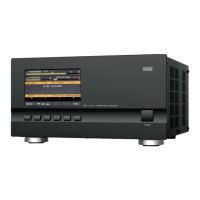2.5. Connecting to External Devices (transceiver, computer, etc.) and User Settings
a) CAT/AUX interface connector
Please, see Figure 2-3 | Rear panel - Connections, Pos. (3).
CAT/AUX interface is used for connecting and operating with various transceiver models (see Table 2-1 |
Signals and pin out of the CAT/AUX connector below and the respective menu in Section 5.3 Menu CAT/AUX
SETTINGS (Selection of CAT/AUX interface) and Figure 5-4 | Menu CAT/AUX SETTINGS).
Most of the modern transceivers can be connected by CAT to the ACOM 500S. This will allow the amplifier
to track the transceiver frequency without any transmission and change the bands automatically when in
OPERATE mode.
The cable can be supplied optionally, ordered separately or home brewed according to Table 2-1 | Signals and
pin out of the CAT/AUX connector and the transceiver's manual.
NOTICE
The CAT connection requires a cable made especially for the ACOM 500S and your
transceiver. Using an inappropriate cable may cause a serious damage to the amplifier
and your transceiver!
If you need cable wiring diagrams, please, see our document
• ACOM CAT cables Technical Information.
The documentation is available for download at www.acom-bg.com.
Note that some of the connections - to the transceiver's BCD band data outputs and Band
Voltage outputs do not provide an exact frequency data, but only band data. Those
connections cannot be used when ACOM 500S works together with ACOM 04AT or 06AT
because the tuner needs to know the exact frequency, not only the band.
Besides the RS-232 and TTL compatible serial interface, the CAT connector also carries the
KEY IN and KEY OUT lines, which can be used instead of using separate cables for those
functions from the transceiver to the sockets of the same names.

